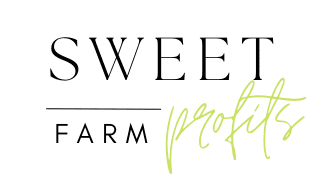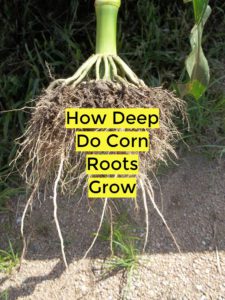Maize, also known as corn, is one of the most widely grown crops in the world, and for good reason. This versatile crop has been a staple in human diets for thousands of years, and its uses extend far beyond just food. From animal feed to bio-based plastics, corn has countless applications in various industries.
In this blog post, we will explore the many uses of maize after you grow them and dive into the nutritional benefits of this remarkable crop. Whether you’re a foodie or an industry professional, you won’t want to miss this comprehensive guide to what corn is used for.
What Nutrients Do We Get From Maize (Corn)?
Maize, also known as corn, is a nutritious crop that provides a range of essential nutrients. Maize is a nutrient-dense food that can be a healthy addition to a balanced diet, mainly when consumed in its whole forms, such as whole corn kernels or cornmeal. Some of the key nutrients found in maize include:
- Carbohydrates: Corn is a rich source of carbohydrates, providing both simple and complex carbohydrates. The simple carbohydrates in maize are mainly in the form of sugars, while the complex carbohydrates are in the form of starch. Carbohydrates are the primary source of energy for the body.
- Fiber: Corn is also a good source of dietary fiber. The fiber in corn can help promote digestion and bowel regularity, and may also help reduce the risk of heart disease and other health problems.
- Vitamins: Maize is a good source of various vitamins, including vitamin B6, thiamin, niacin, and folate. Vitamin B6 is important for brain development and function, while thiamin and niacin are essential for energy production. Folate is essential for cell growth and development and is particularly important for pregnant women.
- Minerals: Maize is also a good source of minerals such as iron, magnesium, phosphorus, and potassium. Iron is important for healthy blood cells, while magnesium and phosphorus are essential for bone health. Potassium is important for maintaining healthy blood pressure and heart function.
- Antioxidants: Maize also contains antioxidants such as carotenoids and vitamin C. These antioxidants can help protect cells from damage caused by free radicals, which can contribute to aging and disease.
What Is Maize Used For?
Food and Beverages
Maize is a staple food in many parts of the world, especially in South America, Africa, and Asia. It is consumed in various forms, including boiled, roasted, baked, and ground into flour. Cornmeal, made from ground maize, is used to make a wide range of foods, such as tortillas, tamales, porridge, and cornbread. In addition, maize is used as a primary ingredient in many breakfast cereals, snacks, and processed foods.
Maize is also used in the production of alcoholic beverages such as beer and whiskey. The starch in corn is converted into sugars during the brewing process, which is then fermented to produce alcohol.
Animal Feed
Maize is a popular ingredient in animal feed, particularly for livestock such as pigs, cattle, and poultry. It is an excellent source of energy and provides essential nutrients such as protein, fiber, and minerals. Cornze is often used as a primary ingredient in commercial animal feed formulations, and it can also be fed to animals in its whole form.
Fuel
Maize is also used as a source of fuel, primarily in the form of ethanol. Ethanol is a renewable fuel that is produced by fermenting sugars from corn and other crops. It is used as a gasoline additive to increase its octane rating and reduce harmful emissions. Ethanol can also be used as a standalone fuel for vehicles that are designed to run on it.
Industrial Products
Maize is used to produce a wide range of industrial products, such as cornstarch, corn syrup, and corn oil. Cornstarch is used as a thickening agent in many foods, and it is also used in the production of paper, textiles, and plastics. Corn syrup is a sweetener that is widely used in processed foods, while corn oil is used in cooking and as an ingredient in margarine and other food products.
Pharmaceuticals
Maize is also used in the pharmaceutical industry to produce various products such as antibiotics, vitamins, and other drugs. Cornstarch is used as a filler in tablets and capsules, while corn oil is used as a solvent in some pharmaceutical formulations.
Adhesives
Maize is used to produce adhesives, such as glue and starch-based adhesives. Cornstarch is an essential ingredient in many adhesives, providing a strong bonding agent that is also environmentally friendly.
Textiles
Corn is used in the textile industry to produce fibers that are used to make fabrics and clothing. Corn fibers are similar to cotton fibers and can be used to produce a range of textiles, including denim, twill, and canvas.
Bio-Based Plastics
Corn seeds is also used to produce bio-based plastics, which are biodegradable and environmentally friendly. These plastics are made from renewable resources such as maize starch and can be used in a range of applications, including packaging and disposable products.
Garden Decoration
Maize is also used for decorative purposes, particularly during the fall season. Dried maize leaves and cobs are often used to make wreaths, centerpieces, and other seasonal decorations.
Cooking Fuel
In some parts of the world, maize is used as a cooking fuel. Dried maize cobs and stalks are burned to produce heat for cooking and heating.
Summary
In summary, maize is an incredibly versatile crop that is used in a wide range of industries and products. Its uses range from food and beverage to animal feed, industrial products, and even fuel. As a renewable resource, maize plays an important role in sustainable development and has the potential to support various industries while also benefiting the environment.




